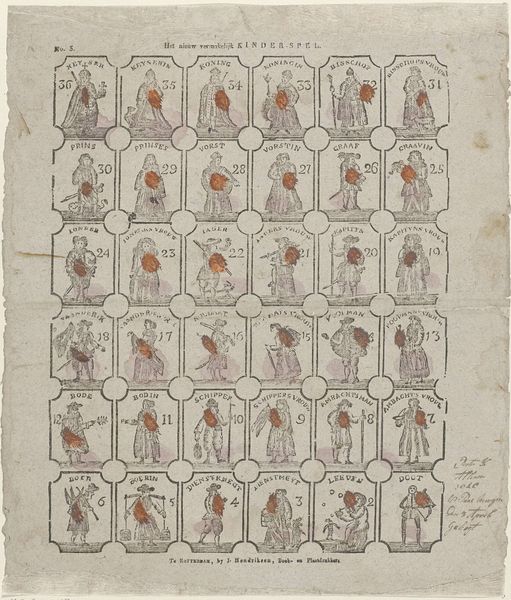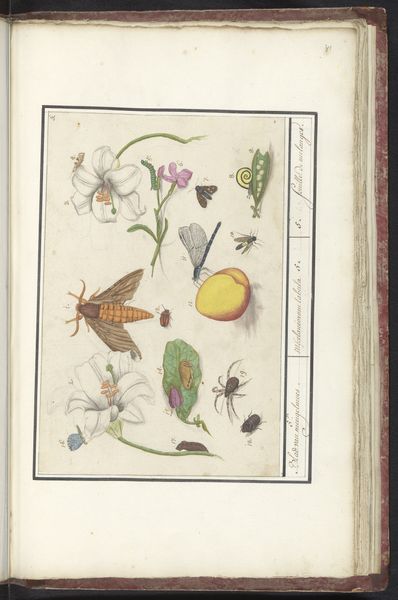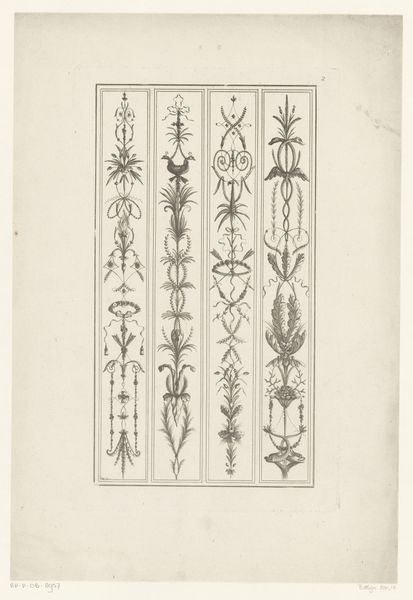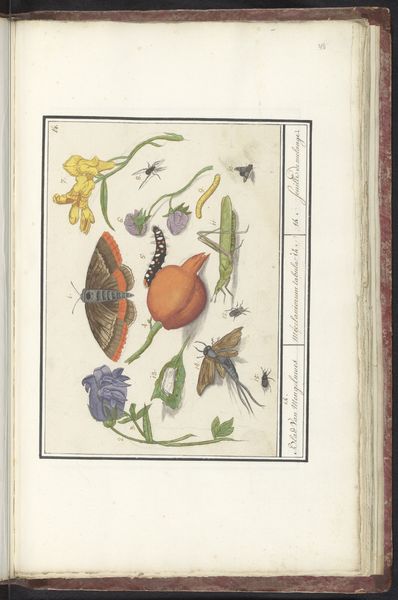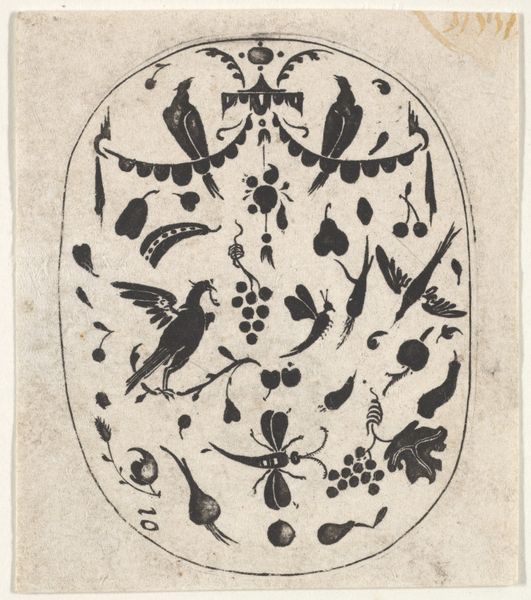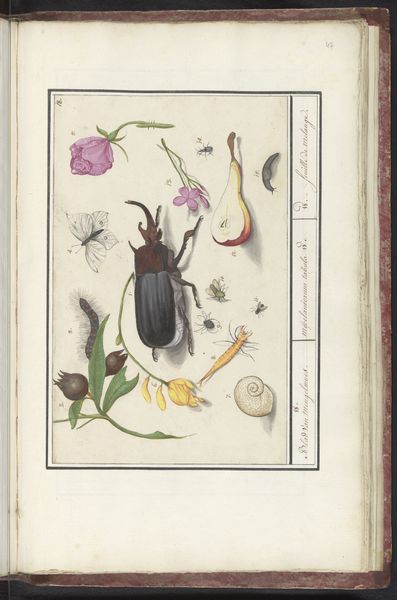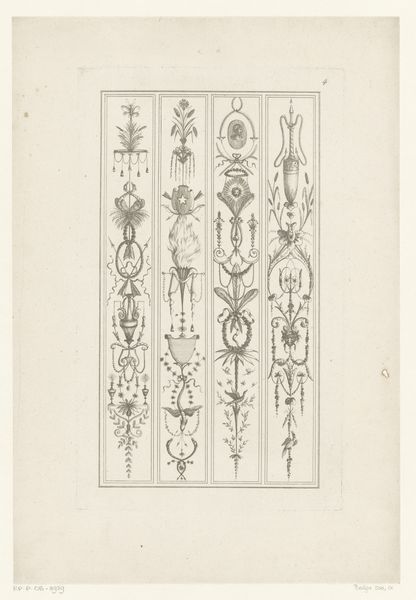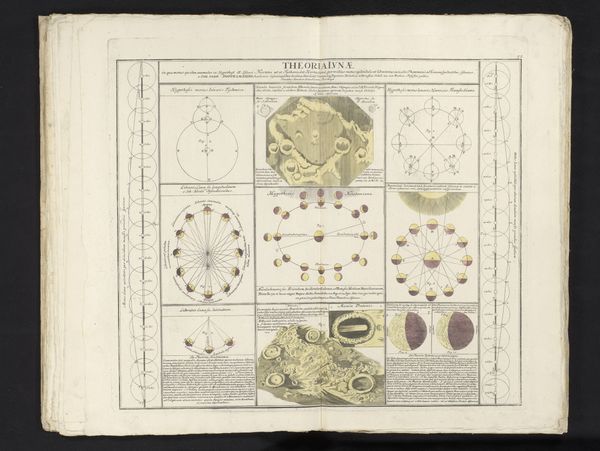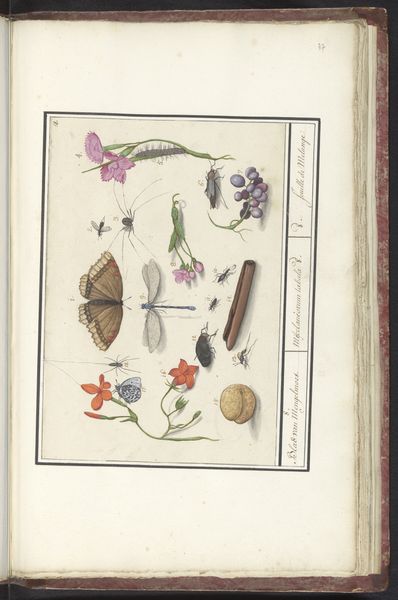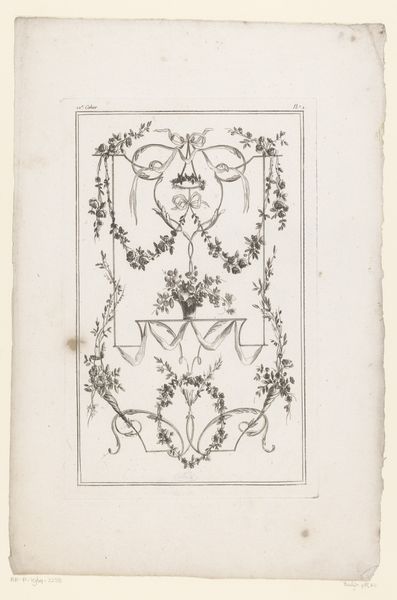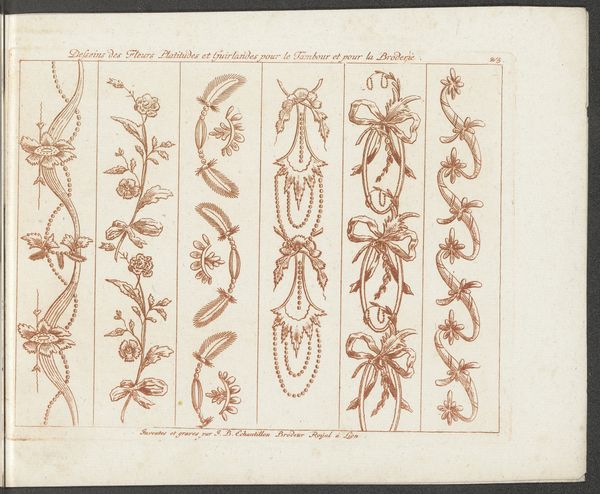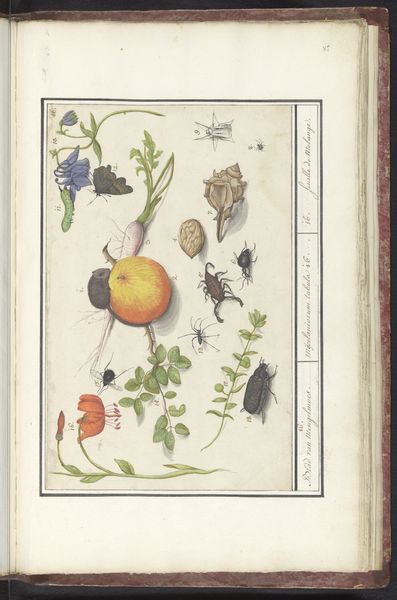
drawing, print, watercolor
#
drawing
#
neoclacissism
#
water colours
# print
#
watercolor
#
geometric
#
decorative-art
Dimensions: sheet: 9 5/8 x 7 3/4 in. (24.4 x 19.7 cm)
Copyright: Public Domain
Editor: So this is Joseph Bonomi’s "Design for ceiling decoration," likely created between 1759 and 1808, a watercolor drawing with touches of print. It strikes me as very ornate and geometric at the same time, with all those symmetrical patterns. How do you interpret this work in terms of its historical context? Curator: This drawing is a window into the visual culture of late 18th-century Neoclassicism, a movement steeped in the revival of classical antiquity. We must consider how this aesthetic intersects with broader socio-political forces. Neoclassicism often served as a visual language for elite power structures. How might these decorative designs reinforce notions of order, control, and idealized beauty? Editor: So the geometric forms and classical motifs weren’t just about aesthetics, but also about projecting a certain image of power? Curator: Precisely. Think about who commissioned these designs and where they would be placed. Ceiling decorations in grand homes weren't simply embellishments; they actively shaped the experiences and perceptions of those within. These idealized figures and precisely ordered patterns suggest a world of reason, privilege, and control. It begs the question: who had access to this visual language, and who was excluded? Editor: That’s a great point. It makes me wonder about the labor and social inequalities inherent in producing such luxury items too. What was the experience of the workers and artisans who actually created these decorations, as opposed to the wealthy patrons? Curator: Exactly! We must investigate the power dynamics embedded within artistic creation and consumption. It's about connecting the visual appeal of this drawing to the economic and social realities of the era. Only through this can we fully appreciate its layered meanings. Editor: Thanks, that really opens up my understanding. I hadn’t considered the power implications before. Curator: Art becomes powerful when you start seeing through its facade.
Comments
No comments
Be the first to comment and join the conversation on the ultimate creative platform.
